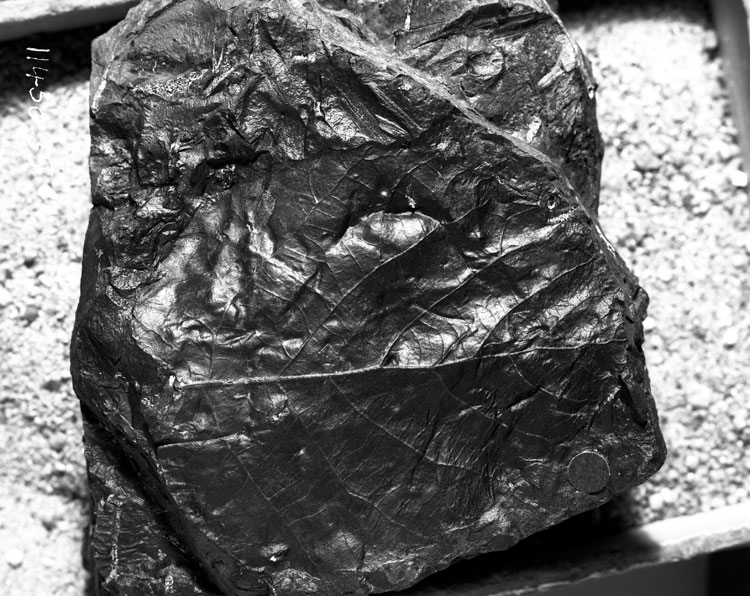Locality
Arctic Slope of Alaska locality USGS 11606, north of Maybe Creek. This locality is a bluff approximately 10 m high on the east side of an unnamed tributary of the Price River. The predominant lithologies are bentonitic clays overlying a silty sandstone capped by coal beds up to 2 m thick, which are in turn overlain by a white-gray medium-grained sandstone. Irregularly dispersed throughout the clay are nodules and sheets of ferruginous limestone (sideritic) which, although light gray when fresh, weather to a rusty brown. With the exception of some poorly preserved plant matter in the upper sandstones, and impressions of platanoid leaves in the power sandtsones, the plant material is confined to these fine-grained iron-rich nodules and is preserved as impressions totally lacking cuticle. There is little evidence of post-mortem decay but many leaves are penetrated by vertical fossil rootlets. Platanoid leaves are most common in siltier/sandier facies. The uppermost coal surface supports several in situ tree bases each of which is approximately 20 cm in diameter.
Latitude: 69.528329 °N
Longitude: -153.887128 °W
Description
Leaf: simple; asymmetrical; wide elliptical; apex missing but probably obtuse; base auriculate or truncate; margin irregularly dentate, teeth with acute apices, concave sides and wide shallow rounded sinuses; venation imperfect marginal suprabasal acrodromous; primary midvein more or less straight, moderate, pectinal veins weak, angle of divergence from the primary midvein almost 90° on one side and 65° on the other, both curving towards the apex but more so on the side of greater angle of divergence, and meeting the margin less than halfway between base and apex; pectinal abmedials depart at varying angles but mostly approximately 75°, simple or forked; superior secondary veins diverging from midvein at varying angles from 55° to 70° on one side and approximately 50° on the other, slightly curved towards the apex, often branched abmedially near the margin, branching becoming less near the apex; inferior secondary veins weak, recurved; tertiary veins percurrent, straight to convex, often branched with a tendency towards random reticulation in places, the angle formed with both ad- and abmedial sides of the secondaries usually acute or right angles but sometimes obtuse on the admedial side; fourth order veins orthogonal percurrent, simple or forked.
Remarks
This specimen shows a distinct affinity with specimens USGS 11606.14 (form HAPLTL113) and USGS 11606.67 (form HAPLTL120) in that they all have a shallowly lobate base in addition to their weak acrodromous venation and toothed margin. Unlike specimen USGS 11606.14, specimen USGS 11606.35 displays little tendency towards brochidodromy of the secondary veins and possesses coarse dentition similar to specimen USGS 11606.67.
